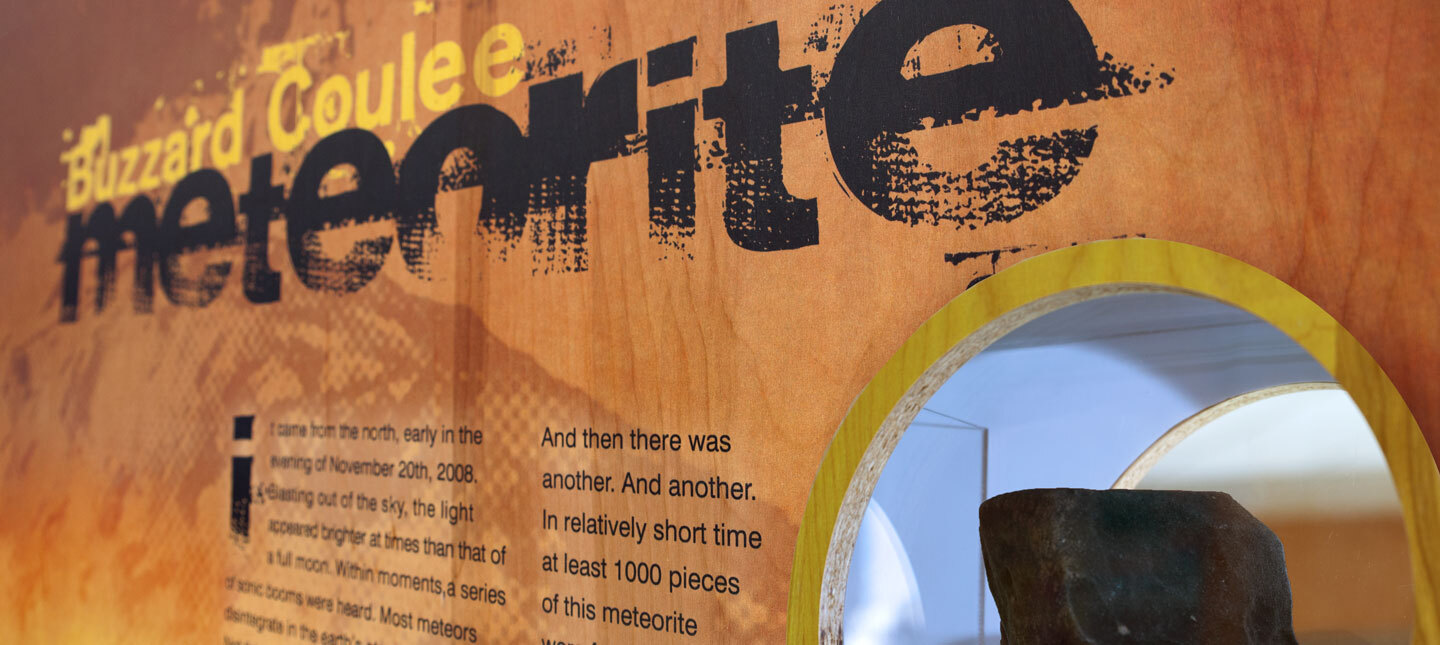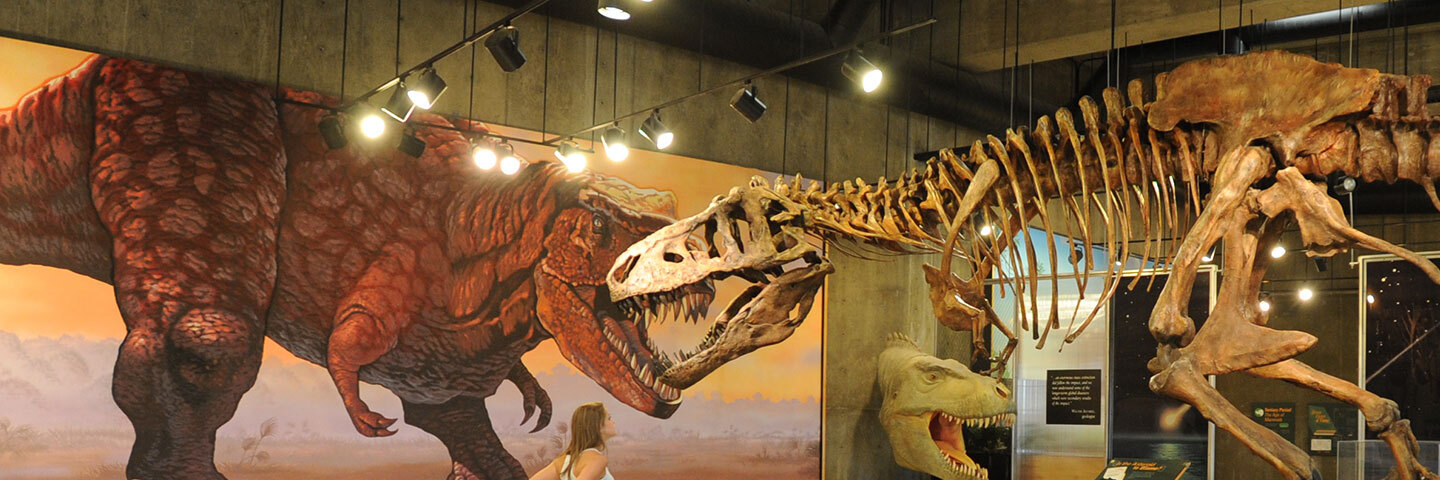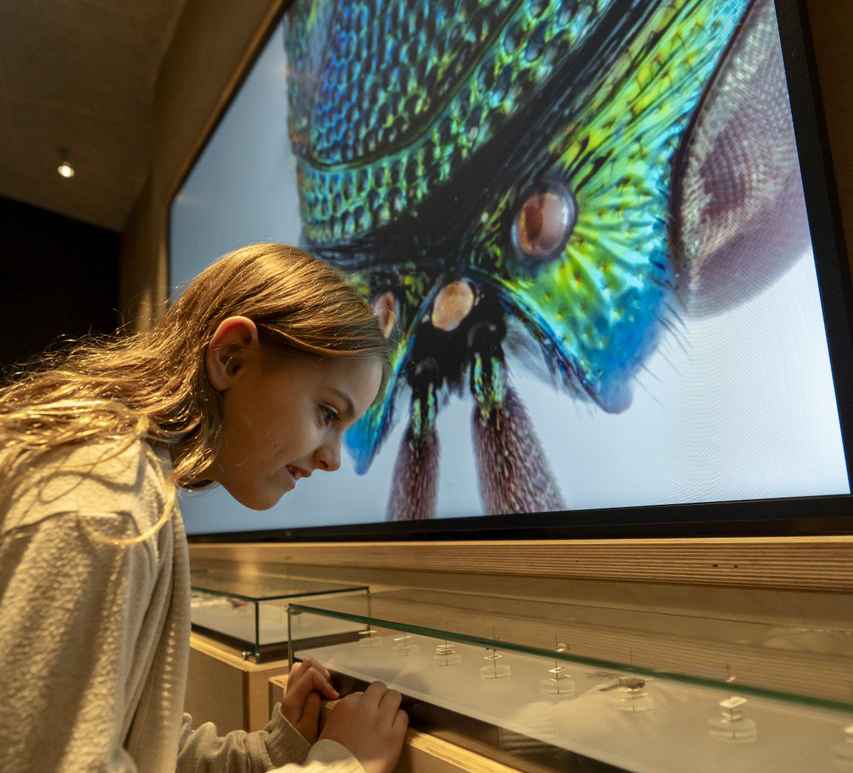The Cretaceous
Dinosaurs and prehistoric reptiles used to dominate the land.
The Cretaceous
Within a half a day, he discovered the base of a heavily worn tooth, and a vertebra from the tail, both suggesting that they belonged to a T. rex.
In June 1994, our palaeontologists began excavating the T. rex, one of the largest known carnivorous dinosaurs. Over 6,000 people visited the excavation site during 1994. The 66-million-year old skeleton is the first T. rex found in Saskatchewan, and was named Scotty. As the individual bones were removed from the rock in our labs, Scotty provided new information both about T. rex and about Cretaceous Saskatchewan.
The Cretaceous Period marked the end of the Age of Dinosaurs. Saskatchewan’s fossil record shows that the province was home to both carnivorous and herbivorous dinosaurs, including meat-eaters like Tyrannosaurus rex, marine reptiles like Tylosaurus, horned dinosaurs like Triceratops, and duck-billed dinosaurs.
See a life-size Tylosaurus. A species of mosasaur – Tylosaurus were a large, predatory marine reptile closely related to modern monitor lizards and snakes. They lived 72 million years ago in a large inland sea that covered most of Saskatchewan during the late Cretaceous period.
Saskatchewan After the Dinosaurs
Saskatchewan has a rich prehistoric history that includes life after the dinosaurs.

Saskatchewan After the Dinosaurs
This section of the Centre looks at the animals and environment that would have been found in southern Saskatchewan about 60 million years ago. Discover reptiles such as a Borealosuchus, the “northern crocodile”, a fish eating reptile called a Champsosaurus as well as some of the mammals that adds to the long, storied history of our prehistoric past.
The Buzzard Coulee Meteorite
See a real meteorite up close.

Buzzard Coulee Meteorite
The meteorite is part of our collection; it fell on farmland east of Lloydminster. The owners of the farm, brothers Ian and Alex Mitchell, donated their astronomical find to the Royal Saskatchewan Museum.



